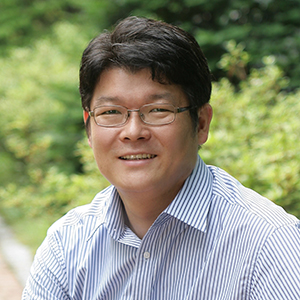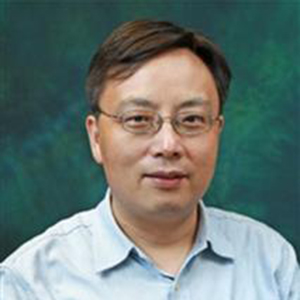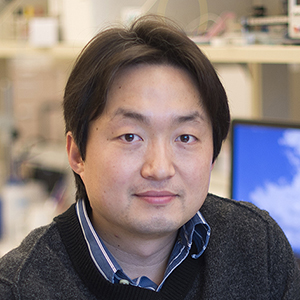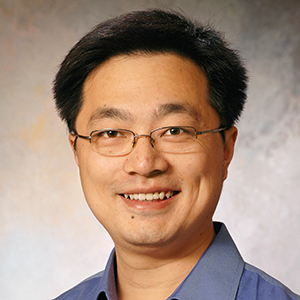2019 Mi-Bio Summit on Flexible and Stretchable Bioelectronics
July 29-31, 2019
Plenary and Invited Speakers
 Dr. Jong-Hyun Ahn
Dr. Jong-Hyun Ahn
School of Electrical and Electronic Engineering
Yonsei University, Seoul, Korea
Graphene and 2D materials for wearable electronic devices and biosensors
Abstract: Rapid advances in synthesis of graphene and 2D materials, and fabrication methods for functional devices enable sophisticated types of functionality and their application to various emerging electronics, such as flexible, wearable and optoelectronic applications, that cannot be addressed with conventional materials. In this talk, I present that two-dimensional semiconductor/semi-metal materials can play critical roles in this context, through demonstrations of complex, mechanically assembled electronic and optoelectronic devices for flexible and wearable applications. Specifically, the mechanics of graphene and MoS2 can yield various devices in distinct, engineered wearable geometries that cannot be easily reproduced with conventional materials and/or conventional device layouts. Examples of devices include touch, tactile sensors, wearable OLED display, and brain signal sensing devices. [1-4]
References
-
M. Choi et al., "Flexible Active-Matrix Organic Light-Emitting Diode Display Enabled by MoS2 Thin-Film Transistor", Science Advances, 4, eaas8721 (2018)
-
S.W. Park, et al., "Epidural electrotherapy for epilepsy", Small, 14, 1801732 (2018)
-
X. Chen et al., "CVD-Grown Monolayer MoS2 in Bioabsorbable Electronics and Biosensors", Nature Communications, 9,1690 (2018)
-
Y. J. Park, et al., "All MoS2 Based Large Area, Skin-Attachable Active-Matrix Tactile Sensor", ACS Nano, 13, 3023 (2019).
 Dr. Anne Milasincic Andrews
Dr. Anne Milasincic Andrews
Departments of Psychiatry & Biobehavioral Sciences and Chemistry & Biochemistry,
Semel Institute for Neuroscience and Human Behavior,
Hatos Center for Neuropharmacology, and California NanoSystems Institute,
University of California, Los Angeles, USA
Website:
www.serotonin.ucla.edu
Twitter: @mindceleste @acschemneuro
Instagram: serotoninscientist
Biologically germane sensing with aptamer-field-effect transistors
Abstract: Detecting small-molecules and other biologically important targets, such as signaling molecules, drugs, toxins, and oligonucleotides, presents unique challenges in complex native environments and at low target concentrations. We developed field-effect transistors (FETs) coupled with nucleic-acid receptors, i.e., aptamers, for sensing in situ. Rare aptamer sequences are identified via solution-phase SELEX thereby circumventing target tethering and epitope masking. Rigorous counter-SELEX against similarly structured metabolites and interferents yields aptamers with high target selectivity. Oligonucleotide libraries are designed for stem closure and adaptive loop-binding upon target recognition. Target-induced conformational rearrangements of stem-loop aptamers are transduced into conductance changes at nanometer-thin In2O3 FET semiconductor surfaces. Portions of the conformational changes in highly negatively charged nucleic acid backbones occur within the Debye length (<1 nm in physiological fluids) to enable direct target quantification over 5-6 orders of magnitude and at concentrations well below aptamer-target dissociation constants. We have demonstrated selective sensing of small-molecule neurotransmitters in brain tissue, e.g., serotonin, dopamine,1-2and nutrients in blood, e.g., glucose, phenylalanine. Via hybridization, we detect and differentiate single-nucleotide polymorphisms sans amplification. Paths to temporally resolved in vivo sensing and other key applications will be illustrated. Metal-oxide thin-film FETs fabricated via sol-gel processing, chemical-vapor deposition, standard and novel low-cost chemical patterning methods,3-4and on flexible substrates5enable multiplexed sensing with wide accessibility and applicability.
References
-
Kim, J.; et al., Fabrication of high-performance ultrathin In2O3 film field-effect transistors and biosensors using chemical lift-off lithography. ACS Nano 2015, 9:4572.
-
Nakatsuka, N.; et al., Aptamer–field-effect transistors overcome Debye length limitations for small-molecule sensing. Science 2018, 362:319.
-
Liao, W. S.; et al., Subtractive patterning via chemical lift-off lithography. Science 2012, 337:1517.
-
Zhao, C.; et al., Large-area, ultrathin metal-oxide semiconductor nanoribbon arrays fabricated by chemical lift-off lithography. Nano Lett. 2018, 18:5590.
-
Rim, Y. S.; et al., Printable ultrathin metal oxide semiconductor-based conformal biosensors. ACS Nano 2015, 9:12174.
 Dr. Michael Cima
Dr. Michael Cima
David H. Koch Professor of Engineering
Faculty Director of the Lemelson-MIT Program
Associate Dean for Innovation
Department of Materials Science and Engineering
Koch Institute for Integrative Cancer Research
Massachusetts Institute of Technology, Cambridge, Massachusetts, USA
Therapy and measurement in single compartments
Abstract: Compartments such as the ureter, bladder, peritoneum, and brain are often sites of disease and can sometimes be viewed as “privileged,” since they intrinsically hinder partitioning of systemically administered agents and segregate important diagnostic analytes. Drug design is built on the concept that key molecular targets of disease are isolated in the diseased tissue. Systemic drug administration would be sufficient for targeting in such a case. It is, however, common for enzymes or receptors that are integral to disease to be structurally similar or identical to those that play important biological roles in normal tissues of the body. Additionally, systemic administration may not lead to local drug concentrations high enough to yield disease modification because of rapid systemic metabolism or lack of sufficient partitioning into the diseased tissue compartment. This talk discusses several methods that physically target drugs and enhance measurements to individual compartments of the body. These compartments have become the focus of a wide array of procedures and devices for direct administration of drugs and diagnostic procedures. The rationale behind single compartment drug delivery or measurement is briefly discussed as well as the results of several clinical trials.
Targeted MRI contrast agents have proven useful in research and clinical studies for highlighting specific metabolites and biomarkers, but their applicability in serial imaging is limited due a changing concentration post injection. This talk will describe a novel class of contrast agent that comprises a responsive material for contrast generation and an injectable polymeric matrix for structural support. The specific example is a contrast agent sensitive to oxygen. It is composed of dodecamethylpentasiloxane (DDMPS) as the responsive material and polydimethylsiloxane (PDMS) as the matrix material. A rodent inspired-gas model demonstrated that these materials are functionally stable in vivo for at least one month. We also observed minimal adverse tissue reactions or migration of contrast agents from the initial injection site. This class of contrast agents, thus, represented a new and complementary method to monitor chronic diseases with the MRI. The use of this material is being explored clinically in the setting of high dose brachytherapy for cervical cancer. That trial will be described.
 Dr. Antonio Facchetti
Dr. Antonio Facchetti
CTO, Flexterra, Inc.
Adjunct Faculty
Northwestern University, Evanston, Illinois USA
Website: http://faculty.wcas.northwestern.edu/~afa912/
Materials and Process Development for Flexible Optoelectronic Devices
Abstract: Organic and hybrid organic-inorganic semiconductors have been envisioned for a myriad of optoelectronic and energy applications where mechanical flexibility, light weight, and low-temperature fabrication processes possibly by printing are major advantage. In this presentation we will describe the design rationale, synthesis, and characterization of several semiconducting materials for printed/flexible thin-film transistors (TFTs), circuits, displays, photovoltaic cells (PVs), and SERS sensors (Fig. 1). Particularly, we will emphasize the design of semiconducting organic polymers with -deconjugated units, which enable to stabilize electron transport and greatly enhance mechanical flexibility and elasticity. Furthermore, we will disclose recently discovered polymer-doped metal oxide semiconductors where the amorphous phase is achieved by the addition of an insulating polymer instead of conventional elemental doping. More fundamentally, we aim at understanding these materials charge-transport/performance characteristics as a function of the semiconductor film processing, device architecture, and device interfacial modifications. Our materials enable the realization of printed TFTs with carrier mobilities > 3-40 cm2/Vs, mass-producible flexible displays with resolution of 200 dpi, printed OPV cells with efficiencies >14%, and organic TFT/SERS sensors with great sensitivities.
 Dr. Yan Feng
Dr. Yan Feng
Department of Applied Physics,
The Hong Kong Polytechnic University, Hong Kong
Email: apafyan@polyu.edu.hk
Flexible Organic Thin Film Transistors for High-Performance Biosensors
Abstract: Solution-gated transistors have shown promising applications in biosensors due to the high sensitivity, low working voltage and the simple design of the devices. Solution-gated transistors normal have no gate dielectric and the gate voltages are applied directly on the solid/electrolyte interfaces or electric double layers near the channel and the gate, which lead to very low working voltages (about 1 V) of the transistors. On the other hand, the devices can be easily prepared by solution coating or printing methods because of the much simpler device structure compared with that of a conventional field effect transistor with several layers. Many biosensors can be developed based on the detection of potential changes across solid/electrolyte interfaces induced by electrochemical reactions or interactions. The devices normally can show high sensitivity due to the inherent amplification function of the transistors. In this talk, I will introduce several types of biosensors studied by our group recently, including DNA/RNA, glucose, dopamine, uric acid, cell, protein and bacteria sensors, based on flexible solution-gated organic thin film transistors. The biosensors show high sensitivity and selectivity when the devices are modified with functional nano-materials (e.g. graphene, Pt nanoparticles) and biomaterials (e.g. enzyme, antibody, DNA) on the gate electrodes or the channel. Furthermore, the devices are miniaturized successfully for the applications as sensing arrays. The solution-gated organic devices are also used for voltage-controlled drug release in aqueous solutions. It is expected that the solution-gated organic transistors will find more important applications especially wearable electronics for healthcare in the future.
Keywords: Organic Thin Film Transistor; Biosensor
 Dr. Eran Klein
Dr. Eran Klein
Department of Neurology, Oregon Health and Science University, Portland, Oregon, USA
Department of Philosophy and Center for Neurotechnology (CNT), University of Washington, Seattle, Washington, USA
Center for Neurotechnology (CNT) Twitter handle: @ctr4neurotech
Ethics at the bioelectronic interface: Identifying issues and developing capacities
Abstract: The emerging field of flexible bioelectronics holds great promise for treating disease and improving quality of life. As with any transformative technology, the field of flexible bioelectronics will be confronted with ethical, legal, and social implication (ELSI) challenges – some closer to the basic science and proof of concept end of the design process (“upstream”) and others closer to the translational end (“downstream”). Successful navigation of ELSI challenges along the design continuum will have important implications for how the field develops. As the field of bioelectronics organizes itself to move from bench to bedside, finding constructive ways to engage and collaborate with ethicists and others to identify and address ELSI challenges needs to be a priority. But how should this be done? In this talk, I present one model of ethics engagement from the field of neural device development that may serve as a model. As part of an NSF-funded neural engineering center, I have helped lead an Ethics Thrust which explores the near-term and long-term ELSI implications of an emerging technology. I will discuss the challenges and opportunities of deep, purposeful, and longitudinal integration of ethics and engineering along the design continuum. I suggest that there are valuable lessons to be learned for the emerging field of flexible bioelectronics.
 Pete Kollbaum, OD, PhD
Pete Kollbaum, OD, PhD
Pete Kollbaum, OD, PhD
Associate Dean for Research
Director, Borish Center for Ophthalmic Research
Wearable ocular devices: Seeing that their future may be more than just "seeing"
Abstract: When first conceptualized in the 1500’s and much of the centuries since, wearable ocular devices, such as contact lenses, traditionally had a simple, singular goal. For instance, often merely used to allow a user to visually function in one specific way (e.g. read up close). However, over time, our society has changed, necessitating the types of devices (e.g. implantable lenses) and utility of these devices to also change. Throughout clinical practice much of typical use remains focused specifically around vision correction, but now often aiming to allow vision at multiple viewing distances in fixed focal systems, although much research is aiming to provide dynamic focus when the aging eye otherwise becomes fixed focus. Recent findings may indicate further potential utility. Specifically, in some ways our society may now have become victims of our own technological success, pushing devices to now aim to not only correct vision but also aim to counteract the negative consequences of otherwise positive technologies (e.g. such as the eye fatigue or refractive state changes induced by long viewing exposures of small, ultra-high-resolution displays). Simultaneous to these changing optical needs, these devices are also being explored as additive, surrogate or replacement measures for alternative technologies, such as monitoring biological processes and delivering medical treatment. The current presentation will highlight several key aspects of the past and current use, as well as identify potential future opportunities.
 Dr. Chi Hwan Lee
Dr. Chi Hwan Lee
Assistant Professor
Weldon School of Biomedical Engineering
School of Mechanical Engineering
Department of Speech, Language, and Hearing Sciences (by Courtesy)
Purdue University, West Lafayette, Indiana USA
Website: https://engineering.purdue.edu/BioNanoTronics/
Sticker-like Electronics (Sticktronics) for Wearable Biomedical Devices
Abstract: Advanced materials engineering and processing technologies provide means to realize a range of ultrathin, flexible and stretchable bio-integrated electronics, opening up a new prospect in many biomedical devices and technologies. The mechanical flexibility and stretchability allow the devices to intimately integrate with biological systems such as biological cells, organs, and skins at their length scale. The embedded semiconducting nanomaterials provide the functionalities that can monitor the clinically useful bio-signals with sufficient spatial and temporal controls. This presentation will introduce two different kinds of novel transfer printing methods by exploiting controlled ‘cracks’ that enable the physical separation of diverse bio-electronics from their original fabrication silicon wafer, thereby can be utilized in many wearable and implantable biomedical applications. Conformal skin-mountable sensors and cell- or tissue-injectable silicon nano-needles will be discussed to show the representative applications in wearable healthcare monitoring and intracellular/intratissue drug delivery. Discussions about the results of detailed experimental and theoretical studies will be followed to reveal the essential attributes of the materials, mechanics, fabrication processes, and system configurations.
 Dr. Bjorn Lussem
Dr. Bjorn Lussem
Associate Professor
Department of Physics
Kent State University, Kent, Ohio USA
Website: www.lussem-lab.com.
Twitter: @BjornLussem
The Organic Electrochemical Transistors – A Key Technology for Organic Bioelectronics
Abstract: The organic electrochemical transistor (OECT) is one of the most promising organic transistor technologies and a key element for the field of organic bioelectronics [Nat. Rev. Mat. 3, 17086, 2018]. OECTs are versatile and can be functionalized for a wide range of analytes, including various metabolites, hormones, or neurotransmitters.
Operation of OECTs is often described by a model proposed by Bernards et al. [Adv. Func. Mat. 17, 3538, 2007]. Although the model was successful in explaining general trends of device operation, several authors proposed modifications to improve its validity. For example, Friedlein et al. [Adv. Elec. Mat. 1, 1, 2015] introduced adjustments to account for a nonuniform charge mobility inside the semiconductor; Rivnay et al. showed that the gate capacitance of OECTs is proportional to the volume of the organic semiconductor [Sci. Adv. 1, e1400251, 2015]. Furthermore, it was argued that the transistors are limited by contact resistances [Adv. Mat. 28, 8766, 2016], and that a dispersion in ion mobility has to be incorporated to account for gate bias stress effects [pss(a) 215, 2018].
In this presentation, the limits of current OECT device models are discussed and improvements of the standard model are proposed. A numerical simulation that consistently solves the continuity equation of holes and cations is presented and an outlook is given toward an experimentally validated numerical 2D OECT model.
 Dr. Georgia Malandraki
Dr. Georgia Malandraki
Associate Professor
Department of Speech, Language, and Hearing Sciences
Weldon School of Biomedical Engineering (Courtesy)
Purdue University, West Lafayette, Indiana USA
Facebook: https://www.facebook.com/PurdueIEaTLab/.
Twitter: @PurdueIEaTLab
Novel wearable technologies for the rehabilitation of swallowing disorders
Abstract: Swallowing disorders (a.k.a. dysphagia) affect an estimated 10 million adults in the US every year, and when not effectively treated, can lead to devastating medical and psychosocial consequences. Current rehabilitation for dysphagia can be effective, but requires daily performance of head/neck training protocols that rely on expensive and large biofeedback devices (such as endoscopy and electromyography devices), typically only available in urban medical centers. Therefore, patients with financial limitations or who live in rural and under-served areas of the country remain at a significant disadvantage in receiving care for their dysphagia. To address this issue, our team has started developing easy to use and inexpensive skin-mountable wearable technologies, specifically designed to record high fidelity swallowing-specific physiological signals from the curvilinear and challenging head, neck, and face areas. These devices are being optimized to monitor swallowing physiology and treatment performance from a distance in order to enhance tele-rehabilitation efforts and increase access of care for as many patients as possible. In addition, these systems have flexible platforms that can be adjusted for other applications in the future. In this presentation we will discuss the first wearable system we have developed, as well as its materials, components and functionalities. Data from a pre-clinical trial and tests with patients with dysphagia that show the first level validation and efficacy of this novel wearable technology will also be presented.
 Dr. Michael McAlpine
Dr. Michael McAlpine
Benjamin Mayhugh Associate Professor
Department of Mechanical Engineering
University of Minnesota, Minneapolis, Minnesota USA
3D Printed Conformal Bioelectronics
Abstract: The ability to three-dimensionally interweave biological and electronic materials could enable the creation of devices possessing unique and compelling geometries, properties, and functionalities. Indeed, interfacing electronic devices with biology in 3D could impact a variety of fields, including regenerative bioelectronics, smart prosthetics, biomedical devices, and human-machine interfaces. Biology, from the molecular scale of DNA and proteins, to the macroscopic scale of tissues and organs, is three-dimensional, often soft and stretchable, and temperature sensitive. This renders most biological platforms incompatible with the fabrication and materials processing methods that have been developed and optimized for functional electronics, which are typically planar, rigid and brittle. A number of strategies have been developed to overcome these dichotomies. Our approach is to use extrusion-based multi-material 3D printing, which is an additive manufacturing technology that offers freeform, autonomous fabrication. This approach addresses the dichotomies presented above by (1) using 3D printing and imaging for personalized, multifunctional device architectures; (2) employing ‘nano-inks’ as an enabling route for introducing diverse material functionality; and (3) 3D printing a range of functional inks to enable the interweaving of a diverse palette of materials, from biological to electronic. 3D printing is a multiscale platform, allowing for the incorporation of functional nanoscale inks, the printing of microscale features, and ultimately the creation of macroscale devices. This blending of 3D printing, electronic materials, and ‘living’ platforms may enable next-generation 3D printed devices, from a one-pot printer.
 Dr. Jonathan Rivnay
Dr. Jonathan Rivnay
Department of Biomedical Engineering and Simpson Querrey Institute
Northwestern University, Evanston, Illinois USA
Twitter: @jrivnay
Designing polymer mixed conductors for applications in bioelectronics
Abstract: Direct measurement and stimulation of ionic, biomolecular, cellular, and tissue-scale activity is a staple of bioelectronic diagnosis and/or therapy. Such bi-directional interfacing can be enhanced by a unique set of properties imparted by organic electronic materials. These materials, based on conjugated polymers, can be adapted for use in biological settings and show significant molecular-level interaction with their local environment, readily swell, and provide flexible, soft, seamless mechanical matching with tissue. At the same time, their swelling and mixed conduction allows for enhanced ionic-electronic coupling for transduction of biosignals. These properties serve to enable new capabilities in bioelectronics. In the first part of my talk I will focus on the design of polymer bioelectronic materials for enhanced electrophysiological sensors based on electrochemical transistors. Synthetic design and processing can yield stable and high performance mixed conductors with high volumetric capacity, high transconductance, and steep subthreshold switching characteristics for low power sensing. Rising areas in stability and circuit integration are highlighted. I will then discuss the unique form factors enabled by polymer electronics, and their applications in regenerative engineering, including the development of 3D conductive composite scaffolds for in vitro and in vivo applications. Through the lens of these recent developments, this talk will highlight that synthetic design and materials processing will continue to fill critical need gaps for challenging problems in bio-electronic interfacing.
 Dr. Marvin Slepian
Dr. Marvin Slepian
Regents’ Professor
Professor of Medicine and Medical Imaging
Professor and Associate Department Head - BioMedical Engineering
Professor of Materials Science and Engineering
McGuire Scholar, Eller College of Management
Director, ACABI – Arizona Center for Accelerated Biomedical Innovation
University of Arizona, Tucson, Arizona USA
Evolution in HealthCare and The Role of New Materials:
Stretchable-, Transient- and Piezo-Electronics, Polymers and Paper: The New “Toolkit” of Enabling Materials for Novel Diagnostics and Therapeutics
Abstract: Health care in the United States and worldwide is under increasing pressures - financial, population and disease-burden. We are living in a world of shifting medical paradigms, with care morphing from a traditional, large population, one-size-fits-all approach to a focus on personalized, precision individual care. We are shifting from “sick care” to a hope for “well care” and prevention. Central in all of this is the need for early, accurate, and personalized diagnostics. To enable these new diagnostic systems, to move beyond large lab-based systems to mobile, home and “on person” systems, novel materials are needed. In this presentation novel advances in materials development will be outlined – specifically the emergence of stretchable, transient and piezo electronic materials, new polymer- and paper-based systems. Examples of novel diagnostic and combination diagnostic/therapeutic systems utilizing these materials will be presented including; 1. “Smart skins” and “Wearables” - ultrathin, stretchable epidermal electronic multi-sensor systems measuring, vital signs, hydration status, material properties, analytes and motion; 2. Internal patches, stents and paving layers – implantable , transient (biodegradable) electronic systems measuring, pressure, flow, mass buildup, and infection with contained therapeutics; 3. Piezoelectric systems – constructs composed of novel conformable, piezoelectric polymer layers enabling in situ energy harvesting and power generation and material characterization; 4. Edible electronics – enteric systems utilizing degradable and food-based components; and 5. Paper Diagnostics – enabling rapid, low-cost, accurate diagnostic systems for world-wide use. This new toolkit of materials will allow the realization of reliable, personalized diagnostics and therapeutics, which are affordable, “green” and biodegradable. Integration and an approach synergizing time-tested medical approaches with modern digital healthcare will be discussed.
 Dr. Bozhi Tian
Dr. Bozhi Tian
Department of Chemistry
University of Chicago, Chicago, Illinois USA
Website: http://tianlab.uchicago.edu/People.html
Non-genetic optical bio-modulation with silicon-based materials
Abstract: Recent studies have demonstrated that in addition to biochemical and genetic interactions, biological systems also respond to biophysical cues, such as electrical, thermal, mechanical, and topographical signals. However, tools that can introduce localized physical stimuli and/or sense biological responses with high spatiotemporal resolution are still quite limited. Although the genetic toolbox, as well as microscopy and spectroscopy are valuable, materials and devices, especially those based on inorganic semiconductors, offer some unique opportunities that are particularly suited to either address fundamental biophysical questions or bring biomedical applications to fruition. Inorganic semiconductors display many important electrical and optical properties and can be controllably fabricated into a broad spectrum of electronic and photonic devices, allowing the formation of functional interfaces from biomolecular to whole organ levels. In this talk, I will focus on the inorganic semiconductor-based bioelectronic and biophotonic interfaces. Specifically, I will discuss our recent progress in optically triggered and silicon nanostructure-enabled neural and cardiac modulation. I will discuss the material designs, fundamental biointerface studies and their implications in other areas. I will end this talk with a discussion of new materials and biological targets that could catalyze future advances.
 Dr. Sihong Wang
Dr. Sihong Wang
Pritzker School of Molecular Engineering
Intrinsically Stretchable Polymer Electronics as an Emerging Platform for Bioelectronics
Abstract: The vast amount of biological mysteries and biomedical challenges faced by human provide a prominent drive for seamlessly merging electronics with biological living systems (e.g. human bodies) to achieve long-term stable functions. Towards this trend, the main bottlenecks are the huge mechanical mismatch between the current form of rigid electronics and the soft biological tissues. In this talk, I will describe a new form of electronics with skin-like softness and stretchability, which is built upon a new class of intrinsically stretchable polymer materials and a new set of fabrication technology. As the core material basis, intrinsically stretchable polymer semiconductors have been developed through the physical engineering of polymer chain dynamics and crystallization based on the nanoconfinement effect. This fundamentally-new and universally-applicable methodology enables conjugated polymers to possess both high electrical-performance and extraordinary stretchability.[1] Then, proceeding towards building electronics with this new class of polymer materials, the first polymer-applicable fabrication platform has been designed for large-scale intrinsically stretchable transistor arrays.[2] Further on, an all-elastomer based strain-programing strategy has been established for finally achieving the strain-insensitivity of the electronic performance under large mechanical deformations. Collectively, these renovations in the material and device designs have led to the realization of circuit-level functionalities for the processing of biological signals, which unprecedently unified with skin/tissue conformability and mechanical insensitivity under large deformation, in one electronic platform. Equipping electronics with human-compatible form-factors has opened a new paradigm for wearable and implantable bio-electronic tools for biological studies, personal healthcare, medical diagnosis and therapeutics.[3]
References
[1] J. Xu#, S. Wang#, et al. Highly stretchable polymer semiconductor films through the nanoconfinement effect, Science, 2017, 355, 59.
[2] S. Wang, et al. Skin electronics from scalable fabrication of an intrinsically stretchable transistor array, Nature, 2018, 555, 83.
[3] S. Wang, et al. Skin-inspired electronics: an emerging paradigm, Accounts of Chemical Research, 2018, 51, 1033.
 Dr. Younan Xia
Dr. Younan Xia
The Wallace H. Coulter Department of Biomedical Engineering,
Georgia Institute of Technology and Emory University, Atlanta, Georgia, USA
Email:
younan.xia@bme.gatech.edu
1D Nanomaterials for Flexible and Stretchable Bioelectronics
Abstract: One-dimensional (1D) nanomaterials have found widespread use in flexible and stretchable (bio)electronics. For more than 20 years, my group has been working diligently to develop novel 1D nanomaterials with controllable sizes, as well as desired electrical and optical properties for the proposed application. In this talk, I will briefly discuss a number of examples, with a focus on the rational design and controlled synthesis of noble-metal (including Ag, Cu, Au, and Pd) nanowires and nanorods. At the end, I will also discuss how to scale up the production of such 1D nanomaterials without losing control over the quality, quantity, and reproducibility needed for a systematic exploration of the structure-property relationship and device fabrication. If time allows, I will also discuss electrospun nanofibers for the related application.
 Dr. Jong-Hyun Ahn
Dr. Jong-Hyun Ahn Dr. Anne Milasincic Andrews
Dr. Anne Milasincic Andrews Dr. Michael Cima
Dr. Michael Cima Dr. Antonio Facchetti
Dr. Antonio Facchetti Dr. Yan Feng
Dr. Yan Feng Dr. Eran Klein
Dr. Eran Klein Pete Kollbaum, OD, PhD
Pete Kollbaum, OD, PhD Dr. Chi Hwan Lee
Dr. Chi Hwan Lee Dr. Bjorn Lussem
Dr. Bjorn Lussem Dr. Georgia Malandraki
Dr. Georgia Malandraki Dr. Michael McAlpine
Dr. Michael McAlpine Dr. Jonathan Rivnay
Dr. Jonathan Rivnay Dr. Marvin Slepian
Dr. Marvin Slepian Dr. Bozhi Tian
Dr. Bozhi Tian Dr. Sihong Wang
Dr. Sihong Wang Dr. Younan Xia
Dr. Younan Xia